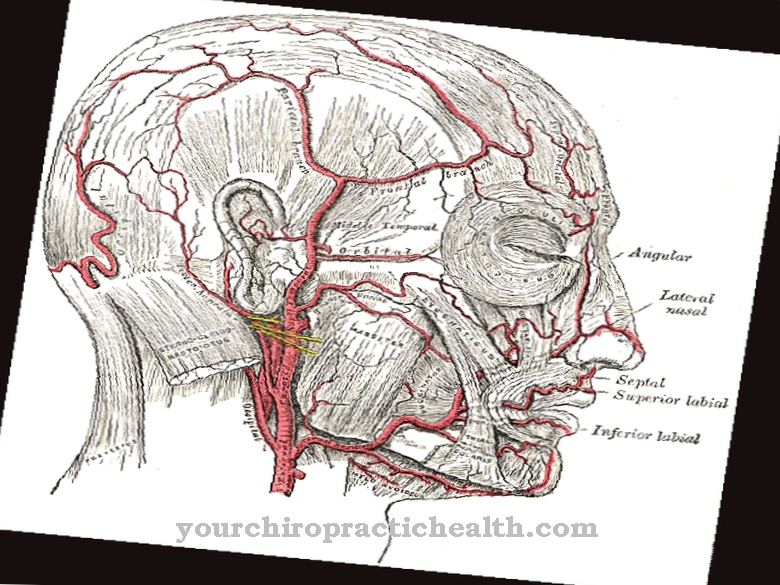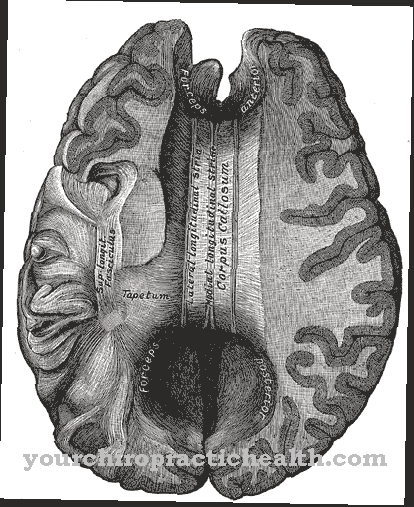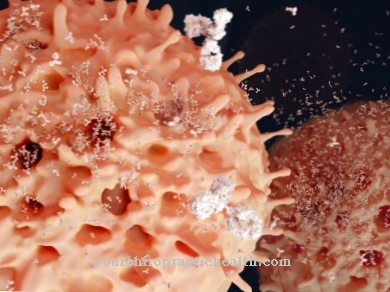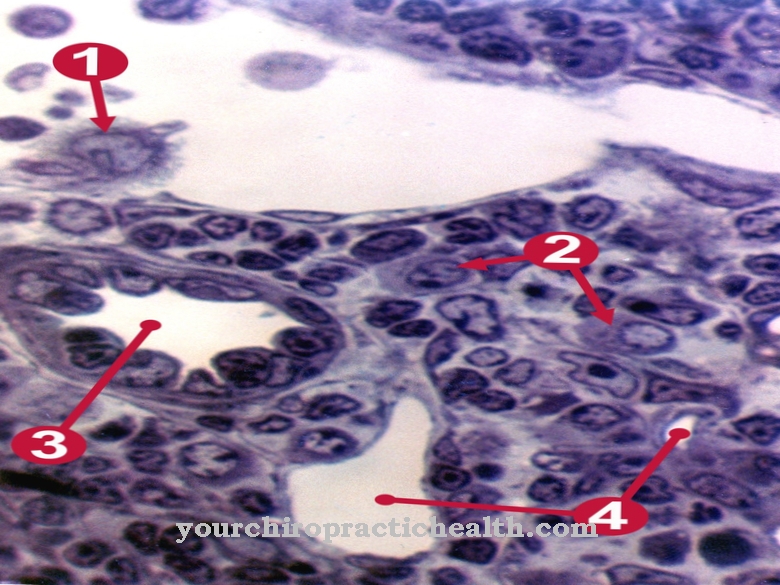As Gap junctions is the term used to describe accumulations of cell-cell channels. These cross the cell membranes of two neighboring cells and establish a connection between the cytoplasm.
What is a gap junction?
Gap junctions are so-called connexons (protein complexes) that connect the plasma membrane of two cells. The membranes are fixed, but under the electron microscope a gap can still be seen.
The channels of a gap junction consist of two half channels (connexons). A connexon is made up of protein complexes that assemble in the shape of a hexagon. A pore remains free in the middle. A channel is formed from two such protein complexes. With the help of the gap junctions, the exchange of signals between the cells is possible. Molecules or ions can be transferred with the help of diffusion, which can be metabolic products, secondary messenger substances or calcium ions.
Anatomy & structure
The term Gap Junction was coined by Morris Karnovsky and Jean-Paul Revel. They found that in the area of a gap junction, the distance between two neighboring membranes narrows.
A gap junction consists of six connexins, which together form a so-called connexon. A connexon can be built up either from different connexins or from the same type of connexins. A connexin consists of a polypeptide chain, which is formed from two extracellular loops, four transmembrane domains or an N- and C-terminus. The molecular weight is determined by the length of the C-terminus. There are at least 20 connexin genes in humans, the designation of the different connexin isoforms being based on their molecular weight. S.
o Connexin 43, for example, has a weight of 43 kDa. A gap junction is very often made up of several isoforms. The functional significance of this diversity has not been fully clarified; the patency of the channels can probably be regulated differently as a result. A half channel is then connected to the half channel of a neighboring cell. This intercellular canal is made up of either different connexons or two identical connexons. The diameter of the pore is 1.5 to 2 nm so that ions or molecules can pass through.
A gap junction can be set up within a few seconds when two cells come into contact. The connexons are arranged in a hexagonal pattern, with around 28,000 channels per square micrometer forming so-called plaques.
Function & tasks
Gap junctions are very common, especially in the embryonic stage. In adults, they can be found in the retina, in glial and epithelial cells, and in the heart muscle. Gap junctions fulfill the following tasks:
- Establishing direct electrical communication between cells
- Production of direct chemical communication via so-called second messengers
- Molecular exchange between cells
- Prevent charges or molecules from being lost during the exchange
Gap junctions are used, for example, in the bones or the lens of the eye to transport nutrients. The nutrients are absorbed by the border cells and then passed on to the neighboring cells via the gap junctions. In the pancreas and the liver they support secretion, while in the nervous system or in the heart muscle they pass on action potentials. A gap junction allows pores to be closed extremely quickly. This occurs, for example, when a neighboring cell is damaged.
The neighboring cell is subsequently decoupled so that the healthy cells remain undamaged. In the heart, in the retina or in neurons, gap junctions function as transmitter-free, voltage-controlled synapses, which are also called "electrical synapses". This allows action potentials to spread very quickly and synchronously. The conductivity depends on the composition of the connexins.
You can find your medication here
➔ Medicines against memory disorders and forgetfulnessDiseases
If changes occur in the construction of gap junctions, this can lead to various diseases. In the so-called Charcot-Marie-Tooth syndrome, for example, a blockage occurs between the periaxonal cytoplasm and the Schwann cell, which leads to degeneration of the Schwann cell.
By producing oncogenes and tumor promoters, tumor cells lose their ability to communicate. The gap junction channels close and incompatible connexins are formed, causing the tumor cells to grow. An altered connexin expression also occurs in inflammatory processes. If cardiac gap junctions change, this leads to cardiac arrhythmias that can be life-threatening. Impairments in the function of gap junctions in the heart often have very different causes. In the so-called Chagas disease, an infection with Trypanosoma cruzii occurs, as a result of which the gap junction channels are only less built into the membrane. In the event of an acute heart attack, the gap junctions close, which reduces the duration of the action potential.
In the post-infarction period, the gap junctions are redistributed and changes in the distribution of the gap junctions also occur in the case of chronic heart failure, with the gap junction surface being reduced in particular. A disruption of the gap junction proteins can also lead to congenital deafness, congenital infertility or skin diseases. The gap junction channels also play an important role in cataracts. The lens of the eye cannot supply itself with blood because blood vessels make the lens body opaque. As a result, the cells in the lens are dependent on the neighboring cells, with the supply taking place via the gap junction channels. If there is a disruption in communication, the cells die and cataracts develop.



























